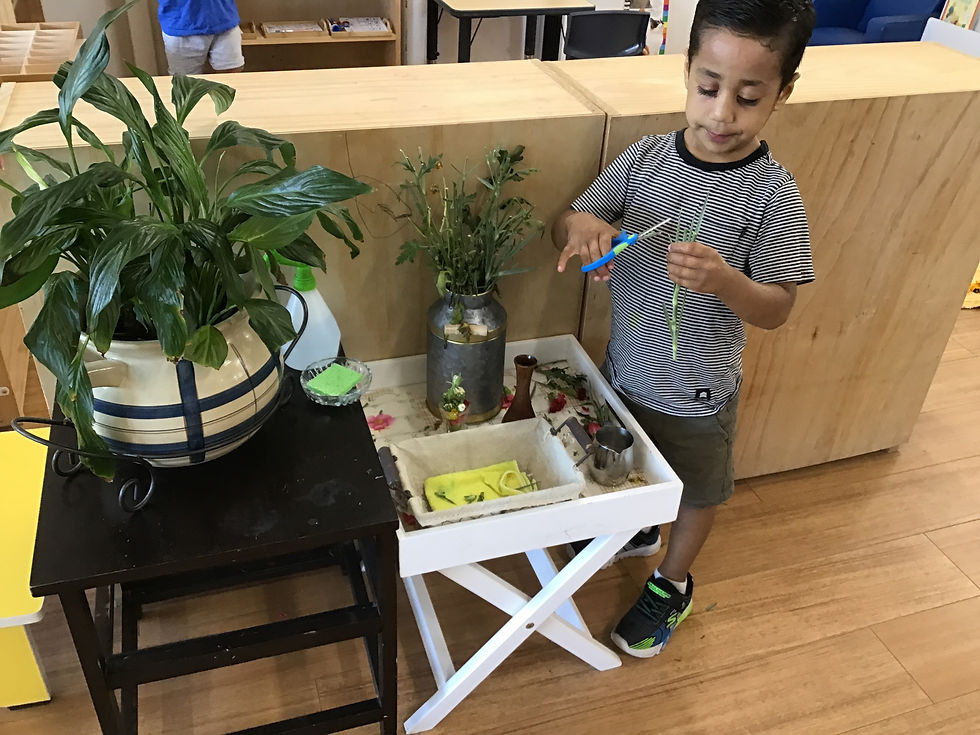Beauty and Order
- Montessori Casa

- Apr 19, 2022
- 2 min read
Published by: Montessori Australia
Montessori environments are prepared to be both beautiful and ordered.
The beauty of a Montessori environment arises from a combination of elements. Ideally, the room is light-filled, spacious and without clutter so children can move around the room with ease. The outdoor area is as attractive as the indoor area, and available to the children at all times. The design of the furniture is elegant and simple, and light enough for children to move around and arrange by themselves if they wish. The use of colour, fabric, decoration and music is simple and artistic, reflecting the aesthetic values of the children’s cultural backgrounds, rather than the mass-produced culture of childhood promoted by media and commercial interests. In the Montessori view, an artistically beautiful environment inspires and uplifts children and helps them to concentrate.
Order and stability are also vital to children’s sense of wellbeing. In early childhood, children depend a great deal on external order in the environment to support the construction of an emerging internal mental order. For this reason, during early childhood, children need an ordered, predictable environment from which they can derive meaning and in which they are able to build knowledge and understanding of the world and their place in it. An ordered environment in early childhood helps children construct a stable, internal order.
Over the age of six, children become very interested in expanding the order they have previously internalised, for example, by:
classifying the world using knowledge systems derived from the educational disciplines
understanding time and change
building a sense of moral order
learning to think in abstractions.
Adolescents, in turn, are interested in applying their knowledge and understanding in practical ways that reflect occupations in the wider community.



For further information about MQAP, please visit Montessori Australia website at: https://montessori.org.au/montessori-quality-assurance-programme




Comments